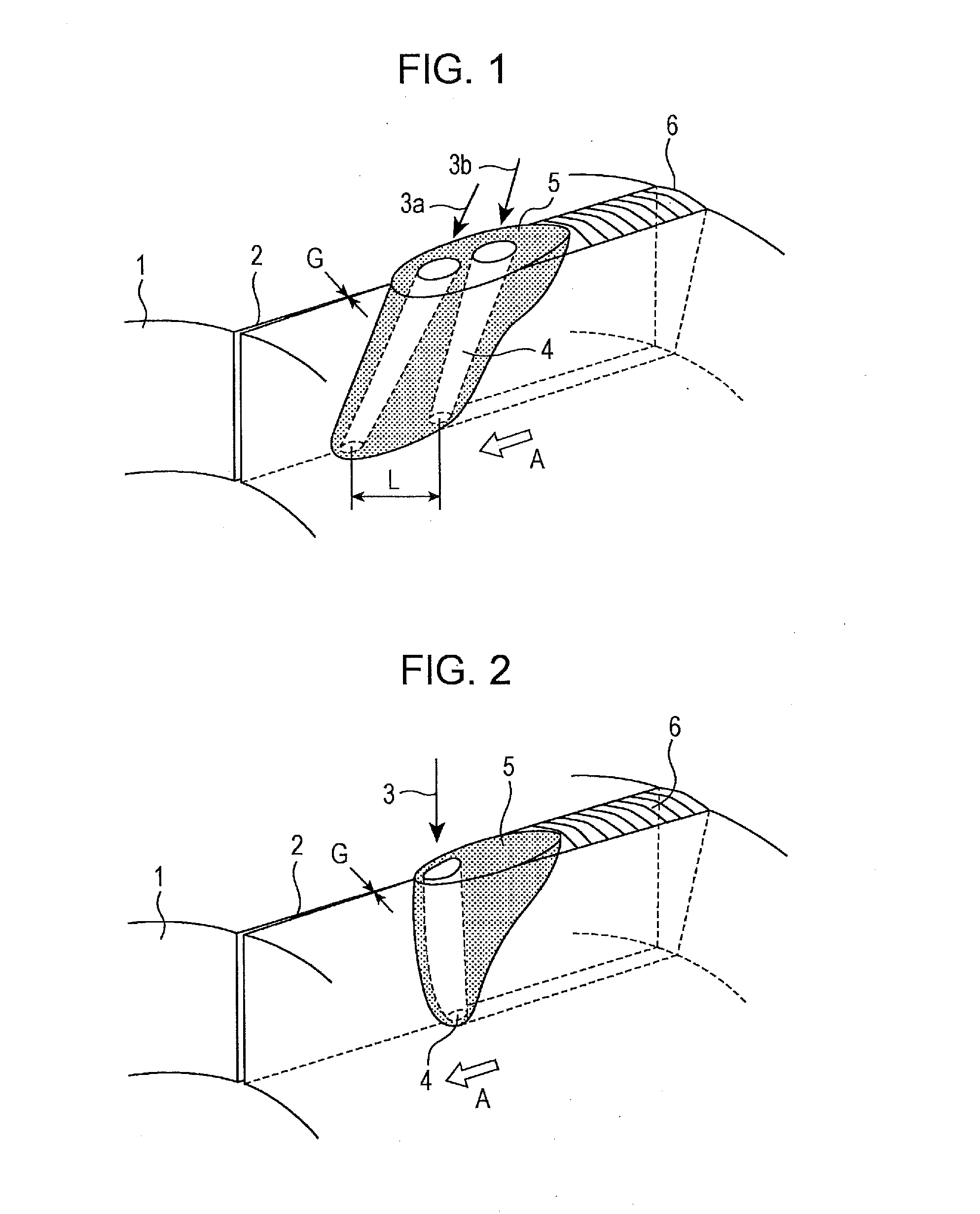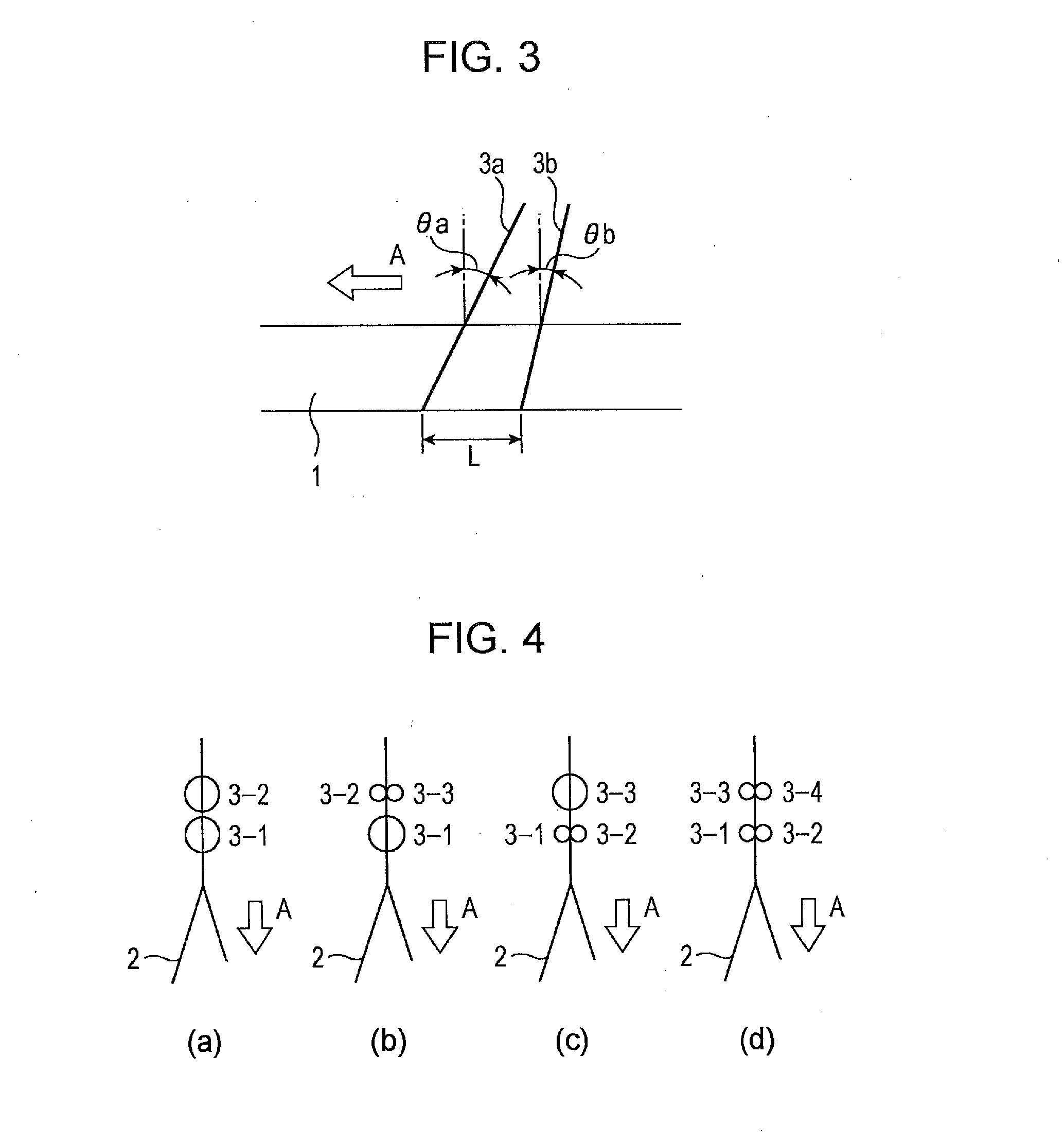Method of manufacturing laser welded steel pipe
a technology of laser welding and steel pipe, which is applied in the field of manufacturing a steel pipe, can solve the problems of difficulty in cold district use of oil country tubular goods or a line pipe employing electric resistance welding steel pipe, and poor low-temperature toughness of seam, etc., and achieves stab manufacturing, excellent quality, and no reduction in weld efficiency
- Summary
- Abstract
- Description
- Claims
- Application Information
AI Technical Summary
Benefits of technology
Problems solved by technology
Method used
Image
Examples
example
[0062]Laser welded steel pipes were manufactured by forming steel strips into cylindrical open pipes using forming rolls, pressing the edges of the open pipes using squeeze rolls, and emitting two laser beams from the upper surface side of the open pipes as illustrated in FIG. 1. Components of the steel strips are shown in Table 1.
[0063]Laser welding was performed using two fiber laser oscillators with a maximum output of 10 kW with the settings being made as shown in Table 2. The distance t (mm) from the upper surface of each open pipe to the focus was fixed to ½T with respect to the strip thickness T. The laser beam incident angles θa and θb shown in Table 2 indicate the angles illustrated in FIG. 3. An incident angle having a negative value indicates that the laser beam is emitted while being inclined toward a direction opposite to the direction A in which welding proceeds.
[0064]Welded steel pipes Nos. 1 to 4 and 7 to 10 shown in Table 2 are examples obtained when the laser beams...
PUM
| Property | Measurement | Unit |
|---|---|---|
| diameters | aaaaa | aaaaa |
| incident angles | aaaaa | aaaaa |
| speed | aaaaa | aaaaa |
Abstract
Description
Claims
Application Information
 Login to View More
Login to View More - R&D
- Intellectual Property
- Life Sciences
- Materials
- Tech Scout
- Unparalleled Data Quality
- Higher Quality Content
- 60% Fewer Hallucinations
Browse by: Latest US Patents, China's latest patents, Technical Efficacy Thesaurus, Application Domain, Technology Topic, Popular Technical Reports.
© 2025 PatSnap. All rights reserved.Legal|Privacy policy|Modern Slavery Act Transparency Statement|Sitemap|About US| Contact US: help@patsnap.com



